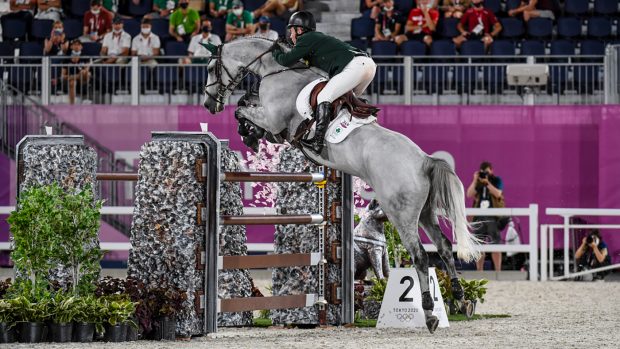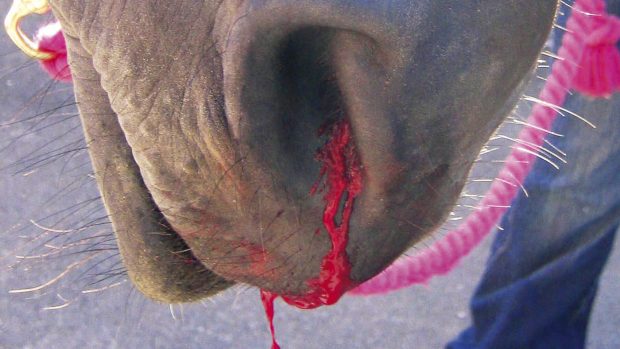Bertie, a seven-year-old Thoroughbred point-to-pointer, had been living out while not in work when his owner noticed a small amount of blood in his left nostril.
A couple of days later, Bertie was found looking dull, with bright red, fresh blood down both nostrils and a pool of blood at his feet. Bertie’s gums were white, and it was obvious that he had lost a lot of blood.
When he was endoscoped the source of the bleeding became clear. Examination of his left guttural pouch (an air-filled cavity below the ear) showed a large plaque of fungus attached directly over the internal carotid artery, a major artery which runs along the side of the guttural pouch. The fungus had eaten through the wall of the artery, allowing blood to fill up the pouch and then pour down Bertie’s nose.
Sometimes this fungus can damage some of the nerves which also run alongside the artery, but Bertie was lucky in this respect. If the nerves are damaged, this can cause difficulty eating, or problems with opening the larynx and whinnying.
Once Bertie had been examined, and bearing in mind that he had already lost a lot of blood, it was important that an operation was carried out as soon as possible to block off the damaged artery. Further bleeding could have been fatal.
Before Bertie was fit to be anaesthetised, he received a transfusion of fresh blood from another gelding. The operation itself involved blocking off the damaged artery by placing a small latex balloon catheter inside it to prevent any further blood loss.
He also needed further treatment consisting of flushing the pouch daily with an anti-fungal solution to kill off the fungus.
Two weeks later, Bertie was able to go home. It took two more weeks of flushing the pouch, via a catheter up his nose, before the final endoscopy showed that all the fungal material had disappeared.
After gradually returning to full exercise, Bertie proved a willing and successful point-to-pointer.



